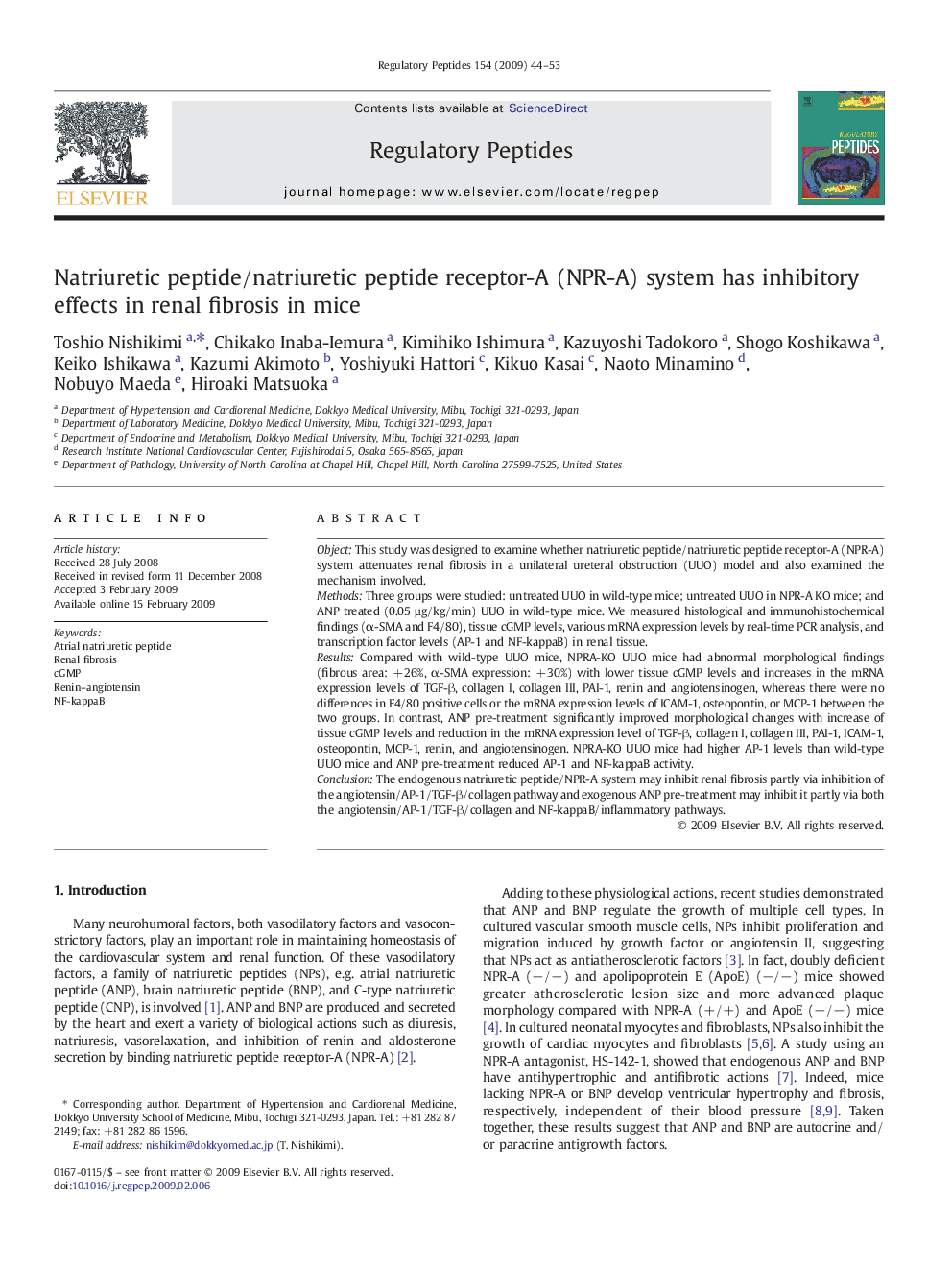| Article ID | Journal | Published Year | Pages | File Type |
|---|---|---|---|---|
| 2022998 | Regulatory Peptides | 2009 | 10 Pages |
ObjectThis study was designed to examine whether natriuretic peptide/natriuretic peptide receptor-A (NPR-A) system attenuates renal fibrosis in a unilateral ureteral obstruction (UUO) model and also examined the mechanism involved.MethodsThree groups were studied: untreated UUO in wild-type mice; untreated UUO in NPR-A KO mice; and ANP treated (0.05 µg/kg/min) UUO in wild-type mice. We measured histological and immunohistochemical findings (α-SMA and F4/80), tissue cGMP levels, various mRNA expression levels by real-time PCR analysis, and transcription factor levels (AP-1 and NF-kappaB) in renal tissue.ResultsCompared with wild-type UUO mice, NPRA-KO UUO mice had abnormal morphological findings (fibrous area: + 26%, α-SMA expression: + 30%) with lower tissue cGMP levels and increases in the mRNA expression levels of TGF-β, collagen I, collagen III, PAI-1, renin and angiotensinogen, whereas there were no differences in F4/80 positive cells or the mRNA expression levels of ICAM-1, osteopontin, or MCP-1 between the two groups. In contrast, ANP pre-treatment significantly improved morphological changes with increase of tissue cGMP levels and reduction in the mRNA expression level of TGF-β, collagen I, collagen III, PAI-1, ICAM-1, osteopontin, MCP-1, renin, and angiotensinogen. NPRA-KO UUO mice had higher AP-1 levels than wild-type UUO mice and ANP pre-treatment reduced AP-1 and NF-kappaB activity.ConclusionThe endogenous natriuretic peptide/NPR-A system may inhibit renal fibrosis partly via inhibition of the angiotensin/AP-1/TGF-β/collagen pathway and exogenous ANP pre-treatment may inhibit it partly via both the angiotensin/AP-1/TGF-β/collagen and NF-kappaB/inflammatory pathways.
